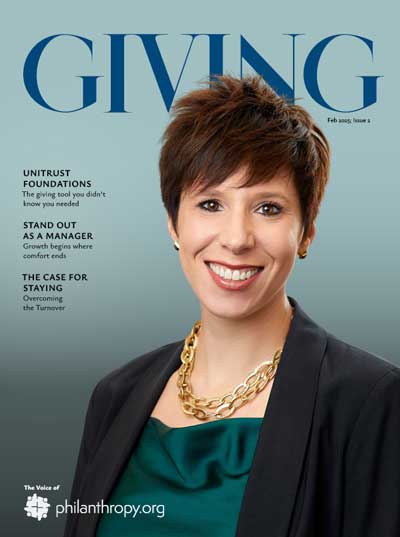It has taken nearly twenty years of persistent lobbying by a handful of key players in the nonprofit sector, and in the end they had to accept some steep compromises, but as of January 1st, if you are age 70-1/2 or older, you can make a direct “rollover” from your traditional IRA into a charitable remainder trust or a gift annuity contract.
Just as with the outright qualified charitable distribution (QCD), sometimes called the charitable IRA “rollover,” which was first enacted in 2006 on a temporary basis and finally made permanent in 2015, the distribution will be excluded from your income, but if you are age 73 or older it will nonetheless count toward your minimum required distribution.
The new legislation is called the “Legacy IRA,” and it was included as part of the “Secure 2.0” Act, which in turn was included in the $1.7 trillion appropriations measure enacted in the waning days of the last Congress and signed into law on December 29.
The final product is scaled back considerably from earlier versions, dating back at least as far as 2009. The question is whether it can nonetheless be seen as “a foot in the door.”
How It Works
To understand how the “Legacy IRA” works, it is helpful to review quickly the existing QCD rules. Section 408(d)(8) of the tax Code allows an IRA participant aged 70-1/2 or older to make “qualified charitable distributions” (QCDs) up to $100,000 per year from one or more traditional IRAs outright to charity. Again, these are excluded from income, but if the participant is past her required beginning date, they are credited against her minimum required distribution for the year.
As a practical matter, this is like having an “above the line” deduction, whether you itemize or not. If you do itemize, the QCDs do not count against your percentage limitations.
And because the distribution is excluded from income, it will not increase the taxability of your Social Security benefit or affect your Medicare Part B premium. If you would otherwise be subject to the 3.8 percent surtax on net investment income, the exclusion can help keep your adjusted gross income below the threshold.
Life Income Gifts
The “Legacy IRA” provisions extend this concept to a one-time distribution to fund a life income gift, either a charitable remainder trust or an immediate charitable gift annuity.
When an earlier version of this bill was first introduced a dozen years ago, the idea was to allow an IRA participant as young as age 59-1/2 to direct distribution of up to $400,000 per year, year after year, into one or more of these arrangements.
Those ambitions were scaled back radically in the final product, in the face of strong objections from the Treasury to the revenue cost of allowing holders of large IRAs to defer the tax incidence of distributions over twenty or more years.
Limitations
As finally enacted, the legislation allows only a “one and done” distribution to one or more of these “split-interest entities,” up to $50k, in a single year. A charitable remainder trust funded with a QCD can hold no other assets, and a gift annuity funded with a QCD can receive funding from no other source.
Only the IRA participant herself and/or her spouse may be designated as non-charitable beneficiaries. And the legislation specifies that the income interest in either of these vehicles must be “nonassignable,” apparently not even to the remainder or issuing charity itself.
Requirements
The payout from a gift annuity funded with a QCD must be at least five percent, and all amounts distributed will be taxed as ordinary income. As it happens, the ACGA recommended rates for annuitants aged 70 and older already exceed five percent, even under the two-life tables, except in some cases where there is a large age difference between spouses. And distributions from the traditional IRA would have been taxed as ordinary income in any event.
And of course it is already a requirement that the payout from a charitable remainder trust be at least five percent. However, the legislation does not appear to preclude using a net income limitation to defer taxable distributions from a unitrust, nor does it appear to preclude a qualified contingency that would terminate the trust early on the occurrence of some stated event, such as divorce or remarriage.
But these are drafting subtleties that would rarely be justified in a trust funded with only $50k, or even $100k if both spouses contributed. It is generally infeasible to draft and administer a charitable remainder trust holding less than half a million dollars.
But there may be a significant market for “legacy IRA” gift annuities, as these can be set up at very little cost and administered as part of an investment pool.
The selling point, particularly for non-itemizers, would be that the “rollover” distribution is excluded from income, and although the annuity payout is taxable entirely as ordinary income, the tax incidence is shifted into later years.
Russell A. Willis III, J.D., LL.M.



